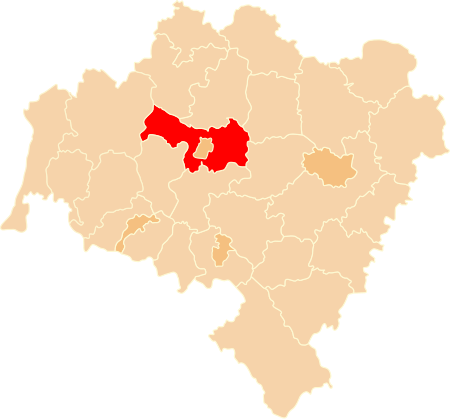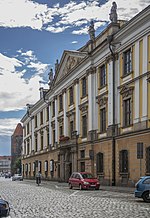Legnica County

Legnica County (Polish: powiat legnicki) is a unit of territorial administration and local government (powiat) in Lower Silesian Voivodeship, south-western Poland. It came into being on January 1, 1999, as a result of the Polish local government reforms passed in 1998. The county covers an area of 744.6 square kilometres (287.5 sq mi). Its administrative seat is the city of Legnica, although this city is not part of the county (it forms a separate city county, which is an enclave within Legnica County). The only towns in Legnica County are Chojnów and Prochowice. As at 2019 the total population of the county is 55,318, out of which the population of Chojnów is 13,355, the population of Prochowice is 3,602, and the rural population is 38,361. The majority of the population is polish but there is a small German minority at 0.02% of the population mostly in Koiszków (Koischkau).
Excerpt from the Wikipedia article Legnica County (License: CC BY-SA 3.0, Authors, Images).Legnica County
Sierocińska, Legnica Przedmieście Głogowskie
Geographical coordinates (GPS) Address Nearby Places Show on map
Geographical coordinates (GPS)
| Latitude | Longitude |
|---|---|
| N 51.216666666667 ° | E 16.166666666667 ° |
Address
Sierocińska 12
59-220 Legnica, Przedmieście Głogowskie
Lower Silesian Voivodeship, Poland
Open on Google Maps











